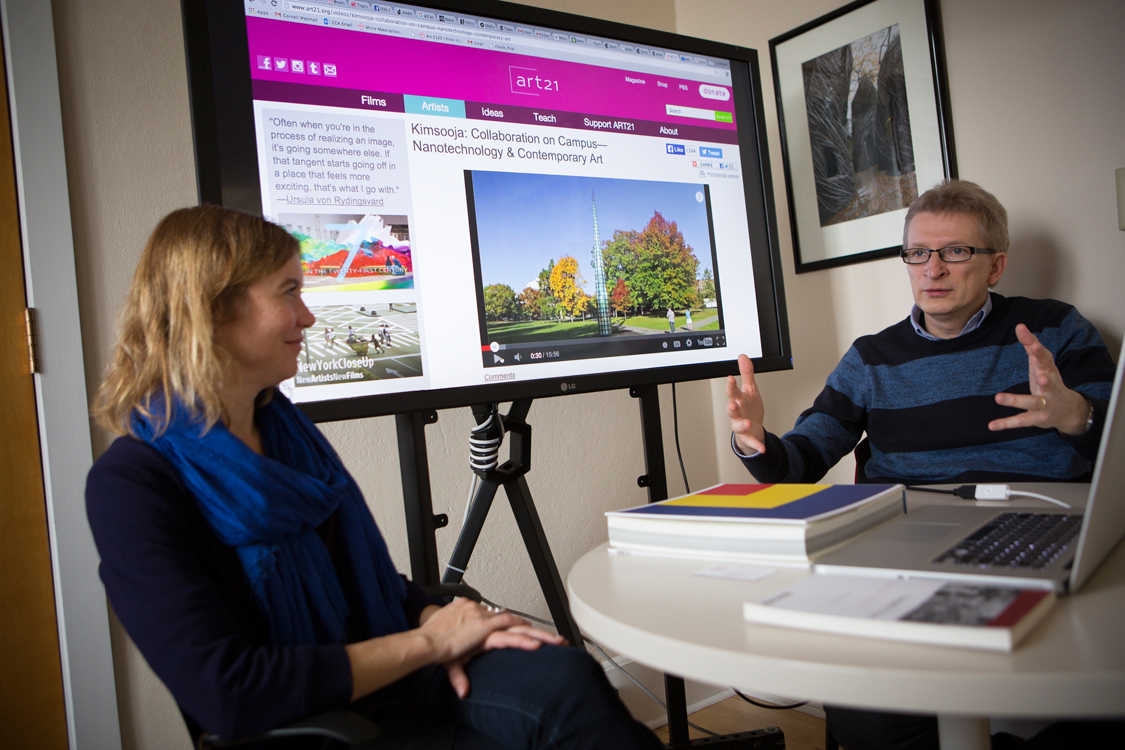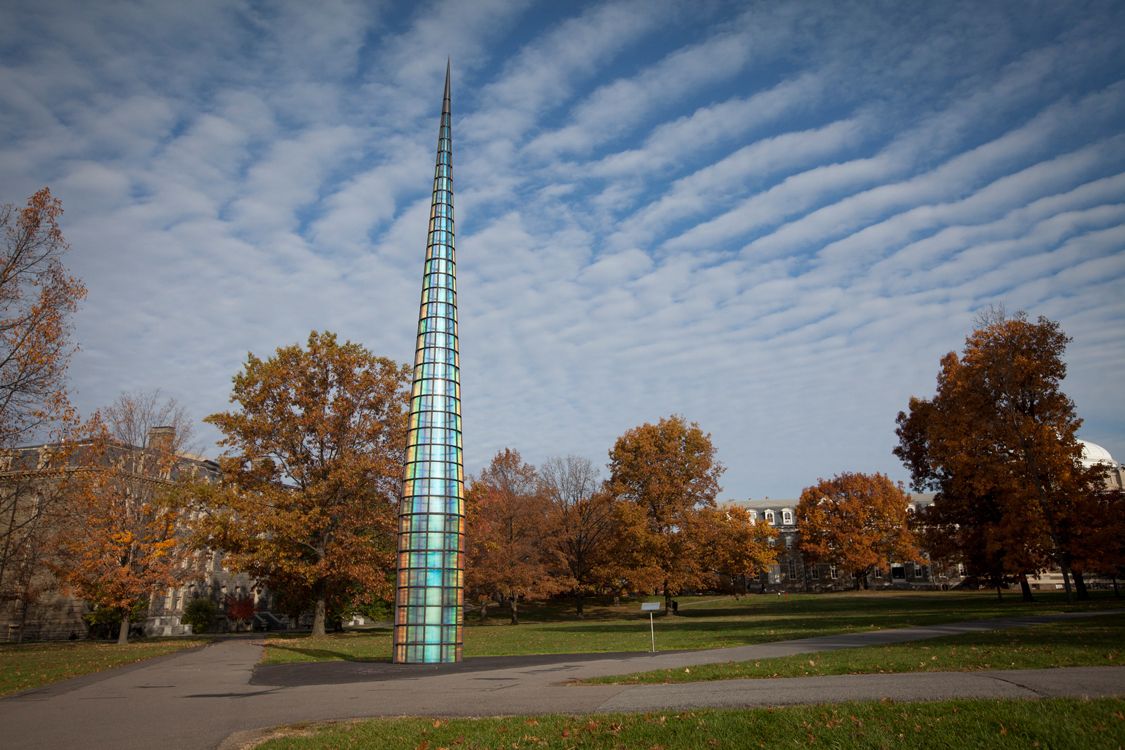Art series highlights creative discovery in 'A Needle Woman'
By Daniel Aloi


An innovative creative project by Korean-American artist Kimsooja with Cornell scientists and students is the subject of a new Art21 documentary.
“Kimsooja: Collaboration on Campus – Nanotechnology & Contemporary Art” will be shown Dec. 3 at 6 p.m. in the Herbert F. Johnson Museum of Art’s sixth-floor conference room, with a reception from 5 to 8 p.m. during the museum’s extended Thursday hours. The event is free and open to the public.
“A Needle Woman: Galaxy was a Memory, Earth is a Souvenir” represented a new direction for the artist and provided an entirely novel process of discovery for the scientists involved. The piece, created for the Cornell Council for the Arts’ (CCA) inaugural biennial, “Intimate Cosmologies: The Aesthetics of Scale in an Age of Nanotechnology,” was installed in September 2014 on the Arts Quad.
“This is the first time Art21 has done a video on an art project in a university setting; they usually profile artists in their studios,” said Stephanie Owens, CCA director.
Ulrich Wiesner, the Spencer T. Olin Professor of Engineering, and a team in his materials science laboratory developed a polymer film with nanostructures creating radiant, iridescent colors, an effect Kimsooja wanted for her artwork.
“It was a creative process in which we employed science and nanotechnology in ways that we had never done before, without knowing where it would go … and that was the beauty of it,” Wiesner said.
Getting the desired effect was a challenge, he said. “We knew that the [polymers] display these beautiful colors when we make the right nanostructures. The whole project was about generating a piece of art, and adapting this ability to capture light in a completely new way, in the form of this 46-foot-tall structure. This only works if the nanostructure actually orients in a certain way with respect to the plane of the film. So we just played around to see under which condition this would happen.”
Owens said that “there was a lot of trust and openness to explore” as Wiesner and the students worked on the project.
“We were under a lot of time pressure, and we were really focused on the process itself and making it happen – generating the films, [solving] all the technical issues to get the 466 or so panels covered with this 10-micron-thick film,” Wiesner said. “We never really looked at the science. Ferdinand Kohle, the Ph.D. student who worked on this, now has really delved into the science to actually quantitatively understand the phenomenon that we see in the ‘Needle Woman.’ So we now understand the physics [and] why we see all these colors.”
Art21 filmed engineering, art and architecture students as they experimented with printmaking techniques to cast polymers that would be applied to the curved Plexiglas panels of the structure being assembled in Shanghai by architect Jaeho Chong, the artist’s son.
“Ferdinand said, ‘This is a real experiment’ – and it was. Every time they went into the lab, they did something new,” Wiesner said. “The students were almost enchanted by the process. You should have seen the [look] in their eyes when they would come into my office and say, ‘Uli! I think we have something!’ Driving the science toward an artistic, architectural display was novel for us.”
Originally planned to come down last December, “A Needle Woman” remained in place until July and is now in storage awaiting a new home, Owens said, while the CCA’s 2016 biennial, focusing on cultural empathies, is being planned.
“Jaeho took these beautiful large-format photographs of the needle at night that were included in an exhibition during the Venice Biennale” earlier this year, she said. The exhibition, “Proportio,” was “an exploration of the ways that human beings have tried to bring order to the chaos of the world,” she said.
“I think this was successful because of what the arts and sciences share,” Owens said. “What’s unique about Cornell is we’re in a university where we can create interfaces between the disciplines – those tensions between fields of study are connective tissues, the space of new knowledge and new learning which can express new modes of being.”
Both Wiesner and Kimsooja share an interest in light, Owens said. “Uli was very passionate talking about his research, and I always felt that what was driving him was this desire to reach across to others and curiosity about the way others see the world. And Kimsooja is the same kind of person.”
The project “stands as a kind of artifact or marker” of that engagement, Owens said, enabling a broader view of artists and scientists. “Only at a university like Cornell can these unique multidisciplinary and interdisciplinary projects emerge from research-level exchanges between faculty.”
“Creating new art in this way, that was just amazing,” Wiesner said. “It wasn’t like what everybody else is doing. This is what made it so special. ... This is a really new and powerful paradigm that we are pioneering.”
Media Contact
Get Cornell news delivered right to your inbox.
Subscribe